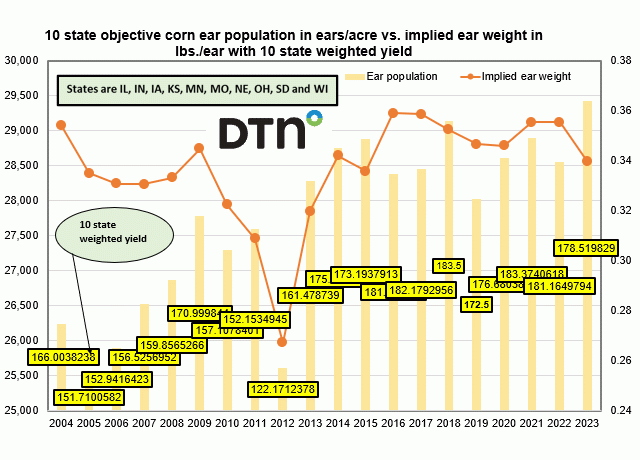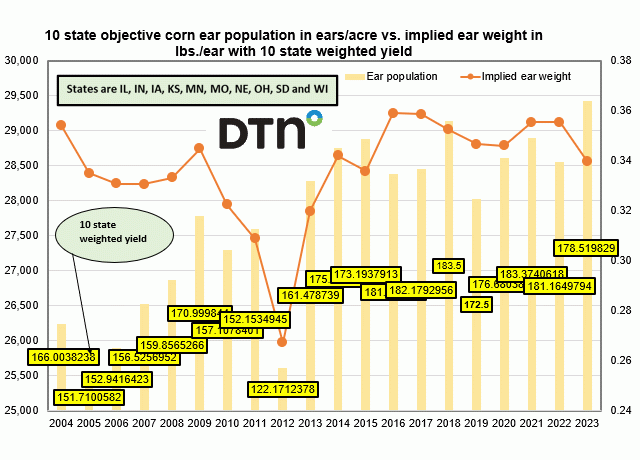Fundamentally Speaking
Crop Conditions Reflected in Latest USDA Yield Estimates
Similar to last year, there is a rather wide divide in weather this past growing season in the top corn and soybean states with more benign conditions in terms of less stressful temperatures and more precipitation in those areas north and east as opposed to those regions more west and south.
This graphic provides a breakdown of the corn and soybean yields in this week's September USDA crop production report as a percent deviation from their respective 25-year trends.
As expected, the 2022 U.S. corn yield lowered to 172.5 bushels per acre (bpa) from 175.4 in the August report but the soybean yield of 50.5 bpa is down substantially from trade expectations and last estimate of 51.9 bpa.
P[L1] D[0x0] M[300x250] OOP[F] ADUNIT[] T[]
For corn, the yield was lowered in 15 of the top 18 states with only CO, IL and KY seeing higher projections and only five states including ND, SD, MN, IL and WI having yields above their 2021 levels.
For soybeans there were four states seeing yields increase from August including WI, IA, TN, and NC with the rest either unchanged or lower and six states including ND, SD, MN, IN, AK and MS with yields above year ago levels.
In corn, Tennessee's yield of 127 bpa down 43 from a year ago is the worst since 2012 and 26.8% below trend with TX 21.8% below trend, KY 16.6% below trend with NC and SD also seeing yields more than double digits below trend.
For soybeans, the Kansas yield at 32 bpa is also the lowest since 2012 and 25% below trend followed by LA at 16.5% below trend, and NE at 16% below trend.
For corn, those above trend are seen in the Upper Midwest and Eastern Corn Belt including WI, ND, OH and IL while for soybeans the best yields are seen in IL, WI, IN, ND and MN.
We should also note that while Minnesota and North Dakota have both corn and soybean yields well above year ago levels and greater than trend, late plantings and a dry second half of the summer no doubt kept yield potential down.
(c) Copyright 2022 DTN, LLC. All rights reserved.






Comments
To comment, please Log In or Join our Community .